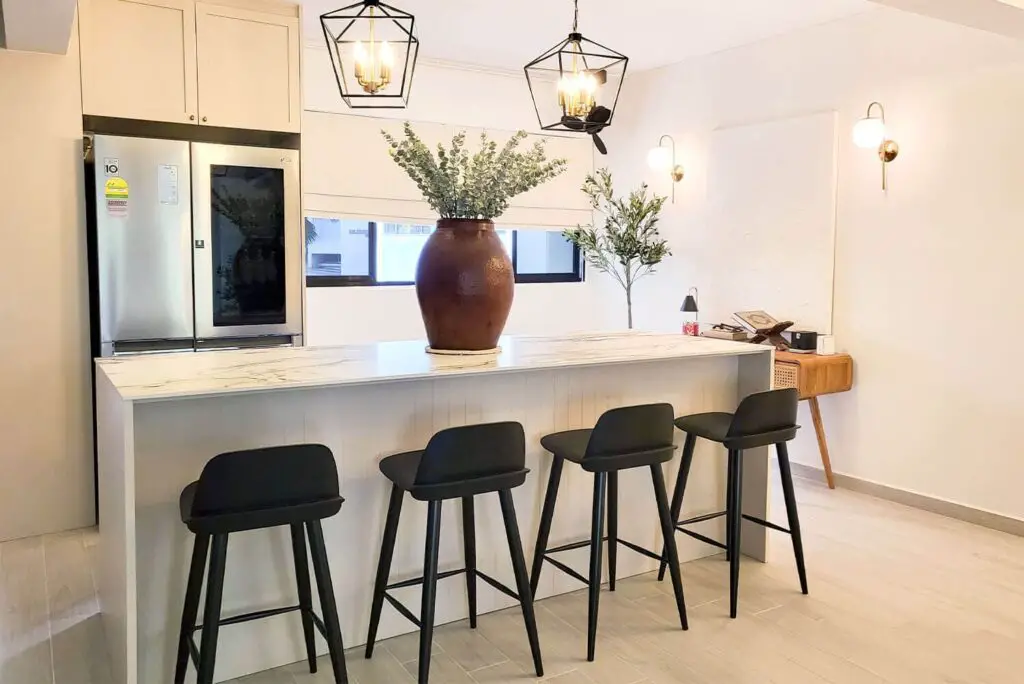Introduction
Choosing the right countertop bar stool can significantly enhance both the functionality and aesthetic of your kitchen or bar area. With countless styles, materials, and features available, it’s essential to find a stool that complements your space while meeting your practical needs. This guide will walk you through the key considerations in selecting the perfect bar stool, ensuring you make an informed decision that will elevate your interior design and comfort.
Understanding Your Needs
Before diving into the specifics of stool designs and features, it’s crucial to assess your needs. Start by considering the following:
- Height and Size: Countertop bar stools come in various heights. Measure the height of your countertop from the floor to determine the appropriate stool height. Typically, there should be a 10-12 inch gap between the seat and the counter for comfortable seating.
- Style and Design: The style of your stool should match the overall aesthetic of your space. Whether you prefer a modern, traditional, industrial, or rustic look, choose a design that harmonizes with your décor.
- Material and Durability: Bar stools are made from a variety of materials, including wood, metal, and upholstered fabric. Consider the durability of these materials, especially if the stools will be used frequently. Metal and wood offer long-lasting durability, while upholstered stools provide added comfort but may require more maintenance.
- Functionality: Think about the functionality you need. Features such as adjustable heights, swivel capabilities, and footrests can add to the convenience and comfort of your stool.
Key Features to Consider
Height and Adjustability
One of the most critical factors in choosing a bar stool is its height. Stools generally come in three main heights:
- Counter Height: Designed for standard countertops, these stools typically range from 24 to 26 inches high.
- Bar Height: For higher bar areas, these stools are usually 28 to 32 inches high.
- Extra-Tall: For very high counters or bars, these stools can reach 33 to 36 inches.
Many modern stools offer adjustable heights, making them versatile for various counter sizes and user preferences.
Seat Material and Comfort
The material of the seat affects both comfort and durability. Common options include:
- Wood: Offers a classic look and can be very sturdy. However, it may not provide the softest seating.
- Metal: Often found in industrial designs, metal stools are durable and easy to clean but may lack cushioning.
- Upholstered: These stools are covered with fabric or leather, providing additional comfort. Look for high-density foam cushions for long-lasting support.
Design and Aesthetics
The design of the stool should complement your existing décor. Consider:
- Backrest: Stools with backrests provide extra support and comfort, especially for longer sitting periods.
- Arms: Some stools feature armrests for added comfort, while others are armless for a sleeker appearance.
- Footrest: A built-in footrest can enhance comfort and posture. It’s particularly useful for taller individuals.
Practical Considerations
Space and Mobility
Measure the space where you plan to place your stools to ensure they fit comfortably without crowding the area. Consider the mobility of the stools as well; some models come with wheels or are easy to move around, which can be useful in multi-functional spaces.
Maintenance and Care
Different materials require different levels of care. Wood stools may need occasional polishing, metal stools can be wiped down with a damp cloth, and upholstered stools might require regular vacuuming and spot cleaning.
Conclusion
Selecting the perfect countertop bar stool involves more than just choosing a style that looks good. By considering factors such as height, material, design, and functionality, you can ensure that your choice enhances both the aesthetics and practicality of your space. Whether you’re outfitting a cozy breakfast nook or a bustling home bar, the right stool will offer comfort, durability, and a touch of personal style.
With this guide, you’re well-equipped to make an informed decision and find the stool that perfectly fits your needs and space.
Q&A
Q: How do I determine the right height for my bar stools?
A: Measure the distance from the floor to the underside of your counter. Ideally, there should be a 10-12 inch gap between the seat and the counter to ensure comfortable seating.
Q: Are adjustable bar stools worth the investment?
A: Yes, adjustable bar stools offer flexibility for various counter heights and accommodate different user preferences, making them a versatile choice.
Q: What materials are best for bar stools used frequently?
A: For high-traffic areas, durable materials such as metal and hardwood are recommended. Upholstered stools may require more maintenance but offer enhanced comfort.
Q: Can bar stools be used in outdoor settings?
A: Yes, but ensure they are specifically designed for outdoor use. Look for materials resistant to weather conditions, such as treated wood or weatherproof metals.
Q: How do I maintain my bar stools?
A: Maintenance depends on the material. Wood stools may need periodic polishing, metal stools can be cleaned with a damp cloth, and upholstered stools should be vacuumed and spot cleaned regularly.


